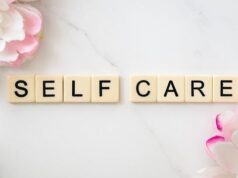How to Deal with Someone Who demands an Apology: A Cheerful Guide to Navigating Conflict
Have you ever found yourself on the receiving end of a demand for an apology? It’s an awkward and often uncomfortable situation that can leave even the most confident among us feeling a bit flustered. Whether it’s a friend who feels slighted or a coworker who misinterprets your intentions,navigating these tricky waters can sometimes feel like walking a tightrope.But fear not! Rather of dreading these moments, why not approach them with a cheerful mindset and a sprinkle of humor? In this blog post, we’ll explore some lighthearted strategies to help you gracefully manage the art of apology demands. After all, every conflict has the potential to turn into a delightful opportunity for growth and understanding, and who doesn’t love a happy ending? So, buckle up as we dive into the colorful world of interaction, emotions, and the magic of saying “I’m sorry”—or maybe even “Let’s talk about this!” in a way that brings everyone a sense of closure and joy.
Understanding the Dynamics of Apology Demands
Apology demands can often trigger a whirlwind of emotions,making the situation feel more complex than it truly is. Understanding the dynamics behind these demands can definitely help you navigate them with grace. Firstly, it’s essential to recognize that the requester may be grappling with feelings of hurt or betrayal. These emotions can stem from a variety of sources, such as miscommunication, previous experiences, or even their personal values. Acknowledging their feelings can pave the way for a more constructive dialogue, allowing you to address the underlying issue rather than getting lost in the drama of the apology itself.
Moreover, how you respond to an apology demand can influence not just your relationship with the individual, but the atmosphere of the interaction. Approaching the conversation with a mindset of empathy and understanding can create a space for openness. Here are some ways to foster a positive exchange:
- Listen actively: Show that you genuinely care about their perspective.
- Seek clarity: ask questions to fully understand their feelings and concerns.
- Express your viewpoint: Share your side calmly to promote mutual understanding.
- Offer a heartfelt response: Whether it’s an apology or an description, being sincere is key.
By treating the conversation as an opportunity for growth, both parties can emerge with a deeper understanding and a strengthened connection.
Identifying the Root Cause of Their Request
Understanding why someone is demanding an apology can unlock the door to resolving the conflict effectively. Start by considering what events might have triggered this request. Where there specific words or actions that may have been perceived as hurtful? It can be helpful to reflect on your interactions with the individual to understand their perspective.Pay attention to their feelings as they might be reflecting deeper issues such as:
- Past Experiences: Previous events that shaped how they react to conflicts.
- Expectations: A mismatch between what they anticipate and what was delivered.
- Communication Styles: Different ways of expressing dissatisfaction can lead to misunderstandings.
Once you’ve identified potential triggers, engage in an open conversation to clarify their feelings. listen actively, showing genuine interest in understanding their point of view. This not only validates their feelings but also lays the groundwork for more productive dialogue. Use questions to explore their concerns further, like:
- “Can you explain why this situation upset you?”
- “What would you have preferred instead?”
- “How can we move forward together?”
Staying Calm and Collected: Your Emotional Toolkit
When faced with someone who is demanding an apology, it’s easy to feel overwhelmed and defensive. Though,maintaining a sense of calm can transform a possibly explosive situation into an opportunity for constructive dialogue. Start by taking a deep breath and acknowledging your feelings. Remember, it’s wholly valid to feel pressured or anxious. Here are a few strategies to keep your emotions in check:
- Pause and Reflect: Give yourself a moment to process what is being asked of you before responding. This can help you articulate your thoughts clearly.
- Practice Empathy: Try to understand the other person’s perspective. Recognizing their feelings can create a bridge toward a more peaceful interaction.
- Maintain Body Language Awareness: Keep your posture open and relaxed. Body language can greatly influence how your words are received.
Once you feel grounded, think about how you want to approach the situation. if you believe an apology is appropriate, word it sincerely and aim for authenticity. If not, it’s okay to express your viewpoint calmly while still showing respect for their feelings. Here are some tips for delivering your response:
- Use “I” Statements: frame your feelings in ways that talk about your experiance rather than accusing or blaming the other person.
- Stay Solutions-Oriented: Instead of getting stuck in the past, focus on what can be resolved moving forward.
- Set Boundaries: If the pressure becomes too much,it’s acceptable to assert your limits while reaffirming your willingness to communicate.
Navigating the Conversation: Words That Work Wonders
When faced with someone who demands an apology, it’s crucial to approach the situation with a calm and open mindset. Instead of feeling cornered or defensive,you can start by acknowledging their feelings. Simple phrases like “I understand why you’re upset” or “I can see how that might have hurt you” can go a long way in diffusing tension. This shows that you are listening and valuing their perspective,which is the first step toward a constructive dialogue. Moreover, it sets a positive tone, inviting them to engage rather than confront.
Once you’ve eased into the conversation, focus on finding common ground. Here are a few strategies to keep the conversation flowing smoothly:
- Ask open-ended questions that encourage them to share more about their feelings.
- Reflect back what they’ve said to express understanding and empathy.
- Express your willingness to resolve the conflict,which highlights your commitment to the relationship.
By steering the conversation with empathy and a genuine desire to reconcile,you can navigate toward a resolution that respects both parties’ feelings and fosters future goodwill.
The Art of Active Listening: Show You Care
When faced with someone who is adamant about receiving an apology, the first step towards resolution lies in the ability to truly listen. Engaging in active listening means not only hearing their words but also understanding the emotions behind them. Acknowledge their feelings by making eye contact, nodding occasionally, and responding with affirmations like, “I see where you’re coming from,” or “That sounds really vital to you.” This creates a connection that can ease tensions and demonstrates that you value their perspective.
After you’ve given them the space to express their thoughts, you can ask clarifying questions that show your genuine interest in their feelings. Consider phrases such as, “Can you tell me more about how that made you feel?” or “What do you think would help resolve this?” By opening the door to dialogue, you help them feel heard while also paving the way for a constructive conversation. Remember, it’s not just about the apology itself, but about forging understanding and respect that can lead to healing. Listening with intent shows that you genuinely care, fostering a more positive atmosphere for resolution.
Deciding If an Apology Is Necessary or Not
When faced with someone demanding an apology, it’s essential to take a moment to reflect on the situation rather than react impulsively. Start by considering the context of the alleged offense.Ask yourself questions like:
- Did I genuinely hurt this person, or is this a misunderstanding?
- Am I willing to admit fault, or do I believe my actions were justified?
- Can I empathize with their feelings, even if I don’t agree with their perspective?
By breaking down the incident in this way, you’ll be better equipped to decide whether an apology is warranted. Remember, an apology doesn’t have to mean you were wrong; it can simply acknowledge the other person’s feelings. If you conclude that a heartfelt apology is in order,make it genuine and focus on how the situation impacted them,rather than on justifying your own actions. On the other hand, if you determine that you owe no apology, prepare to communicate your position kindly but firmly, encouraging open dialogue instead.
Crafting a Genuine Response: Tips for Authenticity
When faced with someone who insists on an apology, it’s crucial to approach the situation with authenticity. Instead of merely uttering the words “I’m sorry” to appease them, take the time to reflect on what happened. Consider the feelings involved and try to understand their perspective. Genuine apologies often require a bit of vulnerability, so be prepared to express empathy. Here are some key points to keep in mind:
- Listen actively: Give them your full attention to show that you value their feelings.
- Acknowledge their feelings: Validate their emotions, even if you don’t fully agree with their standpoint.
- Be sincere: Speak from the heart, and avoid scripted phrases that may come off as insincere.
After embracing these principles, you can craft a response that’s both heartfelt and constructive. Be clear about your intentions and the actions you plan to take moving forward. It’s important to avoid making promises you can’t keep. Instead, focus on how you can improve and foster a healthier relationship. Consider the following:
- Reflect on your behavior: Share insights on what led to the misunderstanding.
- Propose actionable changes: Suggest how you will address similar situations in the future.
- Invite dialogue: Encourage an open conversation to rebuild trust.
Setting Boundaries Without Burning Bridges
When faced with someone who insists on receiving an apology, it’s essential to approach the situation with care and clarity. Start by acknowledging their feelings without admitting fault or taking blame. you might consider saying something like, “I understand that you feel hurt and I truly appreciate you sharing your feelings with me.” This shows empathy and maintains a positive dialogue, while also allowing you to set the stage for your own perspective. Remember, it’s okay to express your own feelings too—let them know how their demands affect you and your relationship. This balance can definitely help you steer the conversation in a constructive direction.
Next, establish clear boundaries about what is acceptable for you moving forward.You could clarify your position by stating, “I value our relationship and want to communicate openly, but I don’t believe an apology is warranted in this situation.” By clearly outlining your thoughts, you’re not only asserting your stance but also preventing misunderstandings. Focus on cultivating respect by actively listening to them and engaging in a dialogue. Always keep in mind that resolving conflicts doesn’t mean you must concede; it’s about finding common ground and maintaining connection, even if you both walk away with differing perspectives. Through this approach, you can uphold your integrity while preserving the relationship.
Finding Common Ground and Building Trust
When faced with a demand for an apology, it can often feel like walking a tightrope. The key lies in understanding the emotions and perspectives involved. Start by actively listening to the other person’s feelings and views.Give them the space to express themselves without interruption; this shows that you value their feelings,helping to build rapport.Acknowledging their perspective can work wonders in diffusing tension. Here are a few tips to foster that understanding:
- Practice empathy by trying to see things from their point of view.
- Use reflective statements to communicate that you genuinely hear them, like, “I can see why you feel this way.”
- Ask open-ended questions to encourage further dialogue and exploration of their feelings.
Trust is frequently enough the foundation of resolving conflicts,and creating a shared space for open communication is essential.Once you’ve established a dialogue, you can work toward finding a solution that respects both parties.It’s important to be honest about your own feelings as well, which creates a two-way street of openness. Consider these strategies to reinforce trust:
- Be obvious about your own emotions regarding the situation.
- Show consistency in your words and actions, which can help reassure the other person.
- Follow through on any commitments made during the conversation to strengthen the relationship.
Turning the Situation Into a Learning Experience
When confronted with someone who insists on receiving an apology, it can be tempting to let emotions take over. However, this challenging moment can be transformed into a valuable learning opportunity. Start by reflecting on the situation; consider:
- What led to the misunderstanding? Analyze the chain of events objectively.
- How did this affect both parties? Understanding their feelings can enhance your empathy.
- What can be done differently next time? Use this experience to improve communication skills.
Embrace a growth mindset. Instead of viewing the request for an apology as a burden, see it as a chance to develop resilience and understanding. You might even want to share your insights with the person seeking the apology. This could foster a sense of connection and promote healthier interactions in the future:
- open a dialogue: Share your perspective to help them understand your actions.
- Highlight the lesson: Discuss how the experience can strengthen your bond.
- Celebrate the growth: Acknowledge both your learning curves through this experience.
Moving Forward: Embracing Growth and Forgiveness
In the journey of life,it’s essential to remember that growth often flourishes in the soil of forgiveness. When you encounter someone who demands an apology, it may feel like an insurmountable hurdle. However,recognizing your own feelings and the other person’s perspective can lead to valuable insights. Rather of getting bogged down in negativity, consider shifting the focus to what you can learn from this experience. Embracing this mindset allows you to cultivate a space where both parties can thrive. Here are some points to contemplate:
- Acknowledge your emotions: Take time to reflect on how the situation made you feel.
- Understand their perspective: Try to see the situation through their eyes, which can aid in processing feelings.
- Emphasize dialogue: open up a respectful conversation to express feelings and thoughts.
- Give yourself permission: It’s okay to take your time before responding or deciding how to proceed.
Ultimately, moving forward requires a blend of self-reflection and empathy. When you approach the situation with a heart ready to heal, it encourages both personal and relational growth. Perhaps, this experience can be transformed into an opportunity for positive change, enabling you to redefine boundaries or strengthen connections. Remember, growth emerges from our struggles, and embracing forgiveness can set the stage for a brighter future. Here are some positive actions you can take:
- Practice self-compassion: Recognize that you’re navigating a complex situation and deserve kindness.
- Focus on solutions: Make a list of constructive steps to address the issue moving forward.
- Celebrate progress: Acknowledge even the small victories in communication and understanding.
- Stay open-minded: Be willing to engage in the healing process without preconceived notions.
Closing Remarks
And there you have it! Navigating the tricky waters of demanding apologies can feel like a high-stakes game, but with the right approach, you can turn a potentially tense situation into a positive experience. Remember, it’s all about communication, understanding, and maintaining your own boundaries.
Embrace the art of clarity, show empathy, and don’t shy away from setting the tone with a sprinkle of light-heartedness. After all, we’re all human, and a little humor can go a long way! So the next time someone comes knocking, demanding that heartfelt “I’m sorry,” you’ll be armed with the tools to handle it with grace, poise, and maybe even a smile.
thanks for reading! Here’s to smoother conversations and stronger connections.Until next time, keep shining bright and spreading those good vibes! 🌟




